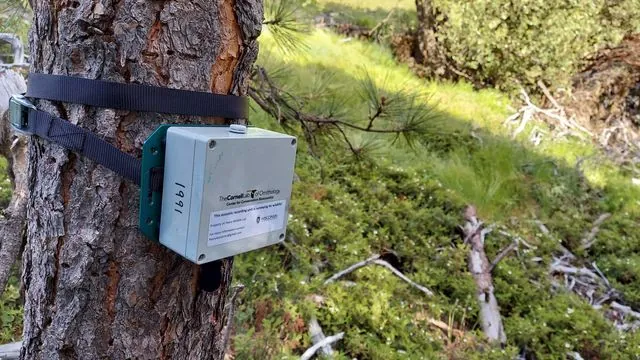
Unlocking Nature's Secrets: The Power of Bird Monitoring for Conservation
2025-05-27
Author: Daniel
Groundbreaking Study Reveals New Conservation Strategies
In a stunning revelation, researchers from Cornell University's K. Lisa Yang Center for Conservation Bioacoustics have discovered that keeping tabs on select bird species can yield significant benefits for various other species in specific regions. This pioneering study, recently published in *Conservation Biology*, analyzed over 892,000 hours of bird sounds recorded in California's breathtaking Sierra Nevada mountains.
The Umbrella Species Concept Put to the Test
The research tested a well-known conservation strategy known as the umbrella species concept. This concept posits that by monitoring a few key species, insights can be gained about the broader ecosystem they inhabit. Lead author Kristin Brunk pointed out that while this assumption has prevailed for years, it has seldom been validated on such a grand scale.
Advanced Technology Takes Center Stage
Utilizing advanced recording technology and cutting-edge artificial intelligence, the research team focused on the co-occurrence of six selected surrogate species, including the majestic California spotted owl and the black-backed woodpecker. Focusing on an impressive 25,000 square kilometers—equivalent to Vermont—the team aimed to exemplify how these birds represent vital habitat conditions that benefit other species. For example, the California spotted owl's presence often heralds mature forests, supporting other birds like the golden-crowned kinglet and hermit thrush.
A New Era in Conservation Science
The Yang Center’s SwiftOne devices recorded bird sounds around the clock from 1,651 sites, with machine learning tools like BirdNET identifying species from the vast amount of data collected. Co-author Connor Wood heralded this technological advancement as a leap forward in conservation science, allowing for large-scale data collection and analysis heretofore thought impossible.
Positive Findings That Could Change Conservation Strategies
The results were compelling: 95% of the forest birds examined showed positive correlations with at least one of the six surrogate species. This implies that promoting the habitat needs of these birds could safeguard a wide range of other species, proving the necessity of this research.
Implications for Conservation Practices
Brunk emphasized how this study marks one of the first substantial tests of the umbrella species theory, challenging existing conservation methodologies. The researchers discovered that the effectiveness of surrogate species fluctuated based on latitude; what works in one part of the Sierra Nevada might not apply elsewhere. This finding prompts caution in assuming successful strategies universally.
Choosing the Right Surrogate Species is Crucial
Selecting the ideal surrogate species is critical for effective conservation. According to Wood, a good surrogate must be specialized enough to thrive in specific conditions, thus providing an umbrella for other species. As threats to forests from climate change and wildfires intensify, these insights are especially timely.
Empowering Forest Managers to Make Informed Choices
Ultimately, this study arms forest managers with vital knowledge to improve their conservation strategies. By understanding which species serve as reliable indicators of forest health—and discerning where these relationships hold—managers can more strategically allocate their limited resources to safeguard ecosystems.




 Brasil (PT)
Brasil (PT)
 Canada (EN)
Canada (EN)
 Chile (ES)
Chile (ES)
 Česko (CS)
Česko (CS)
 대한민국 (KO)
대한민국 (KO)
 España (ES)
España (ES)
 France (FR)
France (FR)
 Hong Kong (EN)
Hong Kong (EN)
 Italia (IT)
Italia (IT)
 日本 (JA)
日本 (JA)
 Magyarország (HU)
Magyarország (HU)
 Norge (NO)
Norge (NO)
 Polska (PL)
Polska (PL)
 Schweiz (DE)
Schweiz (DE)
 Singapore (EN)
Singapore (EN)
 Sverige (SV)
Sverige (SV)
 Suomi (FI)
Suomi (FI)
 Türkiye (TR)
Türkiye (TR)
 الإمارات العربية المتحدة (AR)
الإمارات العربية المتحدة (AR)